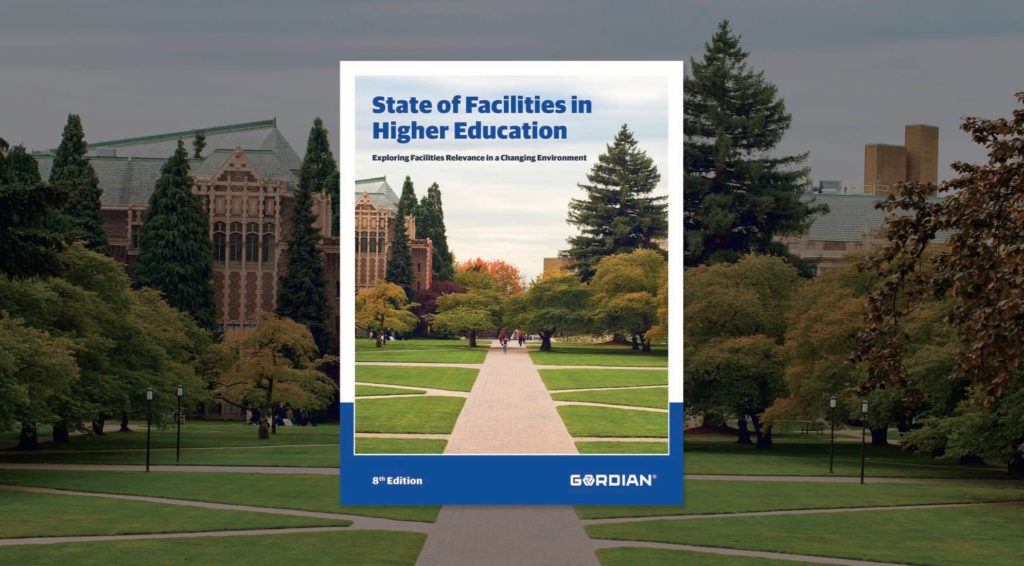APPA/Gordian report: Pandemic accelerated trends and challenges in higher education facilities
Gordian, a provider of facility and construction cost data, software and services for all phases of the building lifecycle, recently partnered with APPA, the organization for educational facilities professionals, to release the 8th edition of the State of Facilities in Higher Education report, which confirms a growing backlog of capital needs, funding shortfalls and enrollment challenges. Despite these growing challenges, the pandemic has revealed opportunities for colleges and universities to reimagine the kinds of campuses needed for higher education going forward.

Throughout the report, the database research and expert insights affirm the following trends that are shifting the higher education landscape:
- Backlogs of asset renewal need grew several more percentage points through 2019 and are now up to $106/GSF, a 35% increase since 2007.
- The facilities investment shortfall is approaching 25%. This troubling trend shows no sign of slowing down in years to come as funding is reduced while capital renewal need continues to rise.
- The percentage of existing buildings in need of renovation — especially those that haven’t been renovated in 10-25 years or more than 50 years — continues to grow even while many institutions have been investing in new facilities.
- Since 2007, campus space across Gordian’s higher education database has increased 16%, even though enrollment was only up 2% before the sharp decline in the fall of 2020.
Gordian’s annual State of Facilities in Higher Education report includes data from 325 higher education institutions in the US and Canada, with a collective enrollment of 3.5 million students and 1.4 billion total square feet of campus space. Approximately 40% of the institutions in the study were private and 60% were public.
“Our predication last year that impending trends of enrollment and revenue declines would rapidly accelerate into the present due to the pandemic has come true,” said Pete Zuraw, vice president of Market Strategy and Development for Gordian. “However, a surprising upside has been the awakening on college campuses to the treasure trove of talent in facilities organizations that has been a key to keeping campuses open, students safe and the schools focused on key survival issues for the future.”
Degrading campus conditions could disincentivize new students, present performance challenges, require more resources to continue operations and increase the potential for safety risks. Forced to redirect dollars to keep the doors open amid the pandemic, institutions can seize the moment to refocus on optimizing space utilization, realistically realigning investment to match key academic needs, prioritizing the safety of students and employees, and reimaging what it means to be an academic community.
“This is a rare moment to shift our thinking about higher education facilities — strategically invest or divest — and change the very way we do business,” said E. Lander Medlin, executive vice president for APPA.
The report also points to solution frameworks in space, investment, technology and organizational transformation. These frameworks can be fundamental to helping institutions unified around change tackle today’s problems and create a richer and more viable future.
The full State of Facilities in Higher Education, 8th Edition report is available for free download upon brief registration on the Gordian website.
